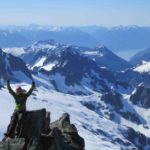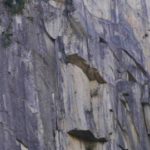AST1+ | Next Steps
Get it going.
So you’ve taken your first steps into the backcountry. You’ve mastered your Avaluator decision-making, studied the bulletins, stocked up on maps, figured out the gear, brushed up on your snow science lingo.... And now what?
While getting out there seems like the obvious answer, it isn’t always as easy as joining the South Coast touring Facebook group. Here’s some hot tips on how to proceed post-AST1!
Get out. Line up schedules with your partners in advance, and make a point of getting out even if conditions aren’t perfect. Practicing navigating simpler terrain in more complex conditions is a great way to prepare yourself for navigating more complex terrain in unexpected conditions.
Having trouble finding partners? With the goal of offering solo riders a more affordable way to get out into the backcountry with a guide, Altus offers Whistler Backcountry Tours Monday-Friday and Pemberton Backcountry Tours every day of the week based on a minimum of 3 participants. Enjoy the added bonus of exploring new terrain and terrain backcountry skills under the guidance of a professionally certified ACMG guide
Dig a Hole. One skill often overlooked is the ability to execute a quick and efficient snowpack test (keywords here: quick + efficient). The fact is, digging a hole can tell you a lot about a snowpack, and dialing in the process can mean the difference of an extra run on the hill.
Stay engaged. Whether you’re joining a group you haven’t ridden with before or heading out with close friends, it’s important to stay engaged in the decision making process, no matter your experience level or ability. Even simply voicing your gut is a great way to exercise your knowledge base and improve your judgment going forward.
Keep learning. The importance of continuous learning in the backcountry cannot be emphasized enough. An AST2 course is incredibly valuable for advancing your decision making, snow assessment, route planning and navigation skills. The four day course also allows for more time practicing in the field, giving the students the opportunity to practice leading the group level up their terrain assessment and management. If you are thinking of venturing further into glaciated terrain, check out a Glacier Travel & Crevasse Rescue or Intro Mountaineering Course.
Be Vigilant. You are surrounded by numerous resources for expanding your horizons. The internet is a bottomless pit of content and there’s no limit to what you can absorb. That being said, it’s your job to actively filter this information, question what you’re told, crosscheck your sources, and decide how much value/credibility each piece of data holds.





